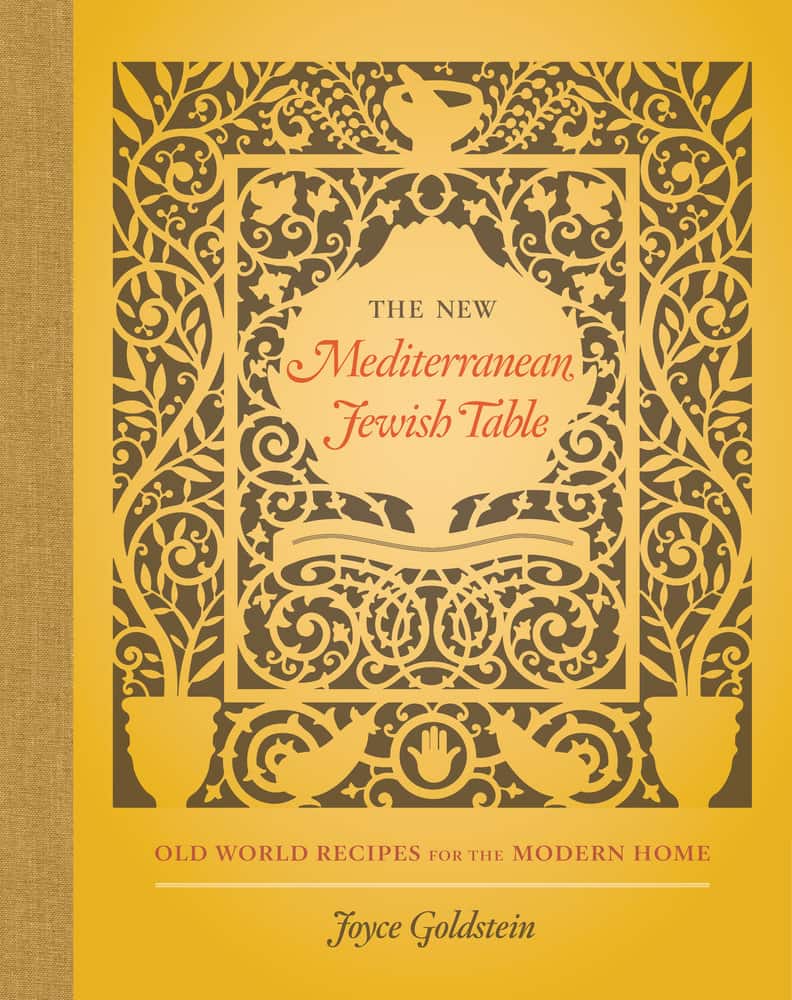by Joyce Goldstein, author of The New Mediterranean Jewish Table: Old World Recipes for the Modern Home
October is National Cookbook Month! Come back for a new recipe from The New Mediterranean Jewish Table each Wednesday, and click here to save 30% on some of our award-winning cookbooks.
Nut and Honey Filled Cookies (Sfratti)
These cookies, which are shaped like sticks, are called sfratti, which means “evicted.” The name comes from Italian landlords of long ago who used sticks to chase away poor tenants who had not paid their rent, some of them probably poor Jews. Jewish cooks have turned the origin of these cookies around, making them into sweet symbols of eviction (much like Passover haroset is the sweet symbol of the mortar used to build the pyramids.) These honey-and-nut-filled cookies are served at Rosh Hashanah. Butter or margarine is used, depending on whether the rest of the meal is dairy or not. My family thinks these are better than rugelach!
Makes 36 to 42 cookies
Pastry
3 cups all-purpose flour
1 cup sugar
Pinch of salt
⅓ cup cold margarine or unsalted butter, cut into cubes
⅔ cup sweet wine, such as Marsala or sweet sherry
Filling
⅔ cup honey
1 teaspoon ground cinnamon
¼ teaspoon ground cloves
2 cups walnuts, coarsely chopped
1 tablespoon grated lemon zest
1 tablespoon grated orange zest
Pinch of freshly ground black pepper
All-purpose flour or fine dried bread crumbs for dusting
1 egg yolk beaten with 2 tablespoons water, for egg wash
Chill a pastry board. To make the pastry, in a bowl, stir together the flour, sugar, and salt. Scatter the margarine over the flour mixture and, using a pastry blender, cut in the margarine until the mixture resembles coarse meal. Add the wine and stir and toss with a fork until the mixture is evenly moist and just holds together. Alternatively, combine the flour, sugar, and salt in a food processor and pulse briefly to mix. Scatter the margarine over the flour mixture and pulse until most of the butter is the size of peas. Add the wine and pulse until the mixture comes together in a rough mass. Gather the dough into a rough ball. Divide the dough in half, flatten each half into a disk, wrap in plastic wrap, and refrigerate for 1 to 2 hours.
To make the filling, pour the honey into a heavy saucepan, place over medium-high heat, and bring to a boil. Add the cinnamon and cloves and boil until the honey forms a ribbon when a spoon is lifted, about 10 minutes. Add the walnuts, citrus zests, and pepper and simmer for 10 minutes. Remove from the heat and let cool until you can touch the mixture without burning yourself.
Dust the chilled pastry board with flour, then pour the hot filling onto the board. Using your hands, roll the filling into 6 thin ropes each 12 to 14 inches long. Act quickly as the mixture sets up fast!
Preheat the oven to 375°F. Butter 1 or 2 sheet pans or line with parchment paper.
On a lightly floured work surface, divide each pastry disk into 3 equal pieces. Roll out each piece of dough into a rectangle 4 inches wide and 12 to 14 inches long. Place a strip of nut paste near the long edge of each rectangle and roll up the dough around the paste, fully enclosing it. Cut each roll crosswise into 2-inch lengths.
Place the cookies, seam side down, on the prepared pan(s), spacing them 1½ inches apart. Brush them with the egg wash. Bake until golden, about 20 minutes. Transfer the cookies to wire racks and let cool completely. The cookies will keep in an airtight container at room temperature for up to 1 week.



